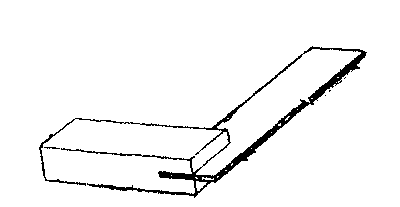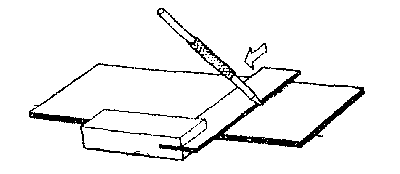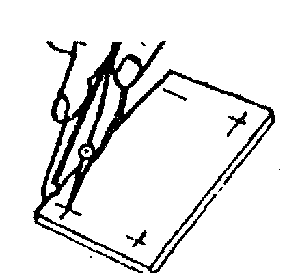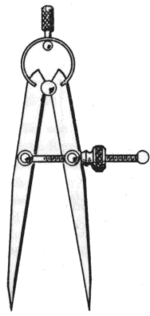Marking-Out
Tools Used on Metal
What allows tools to cut, shape and mark-out pieces of metal?
So that all of these tools can scratch and punch into a piece of mild
steel, they have
to be HARDER than it. Special Tool-steel Is used to make these tools.
They also
receive special treatment, to make and keep them hard.
ENGINEERS SQUARE
This ‘all-metal” square is similar to the Try Square used
on wood. However, the Engineers Square is smaller and more accurate. It’s
purpose is the same, to draw lines at 90 to an edge and to check if
work is a perfect right-angle; as below.

SCRIBER
These are used to draw/scratch lines onto the surface of a piece of metal.
They must
not be used for anything else, as the thin, sharp point us easily mined
If misused. Correct use is shown below.

ODD LEG CALiPERS
Once “odd-legs” have been set to a required measurement, they
are used to draw a line along a piece of metal. This line will be parallel
to the edge it is drawn along: as below. Odd—legs are the ‘metal
equivalent” to a marking gauge, used when marking out wood.

MARKING-OUT BLUE
Special sharp and hard tools are needed to mark-out lines on metal. As
these lines become very difficult to see, scratched on a thin layer of
“marking-out blue" is brushed on first. A pemanent marker-pen
can be used in place of the “blue ink-like” liquid
DOT PUNCH
Sharp lines tend to disappear while filing metal, as Burrs are constantly
produced On the edge of a piece of metal. In order that lines can be seen
more clearly feint dots, called WITNESS MARKS. can be lightly punched
around the entire shape (that will be cut-out). A dot punch is used, along
with a hammer: to create witness marks. Rest the work on a block of metal
to do this, not in a vice. (The point is ground or sharpened to make an
angle of 60 degrees)

CENTRE PUNCH
A centre punch is a larger version of a dot punch but it is not as sharp
at the point. It is very difficult to start drilling a hole In a piece
of metal, at an exact position. The point of the drill needs a large dot,
to ‘lead
It in”. A centre punch needs to be hit with greater force, to create
a deeper dot. (Point ground to 90 degrees)

DIVIDERS
The sharp points on both ends are used to mark out circles and curves
onto a piece of metal.
Also once the dividers have been set at a measurement they can be used
to mark off lots of equal distances along a line.

|

